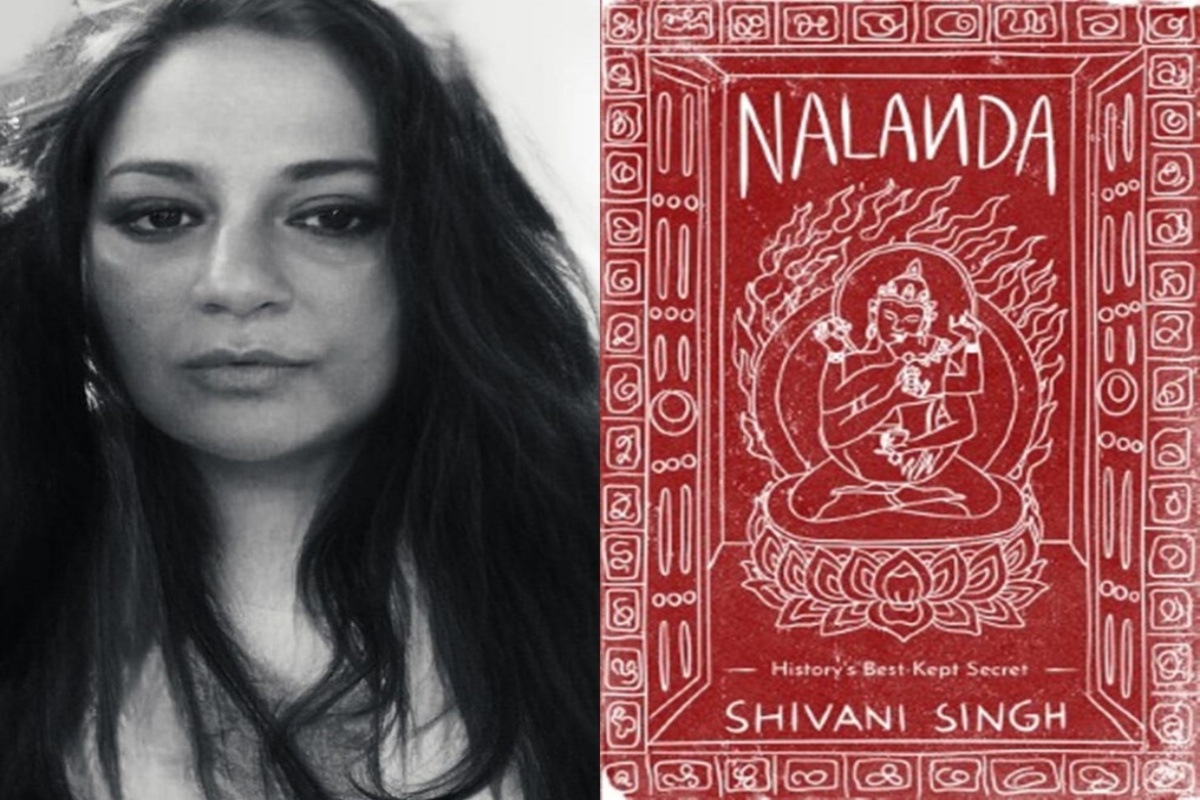As one walks through the ruins of Nalanda, every stone speaks of a bygone era that asks to be kept alive in our collective consciousness, says the multi-faceted Shivani Singh of her captivating historical thriller that is a fascinating tale of how one of the worlds most ancient universities got destroyed.
“As an academic, media professional and film maker, it did not take long for me to conclude that every event is fundamentally, a story – and history is a narrative waiting to be told, Singh told IANS in an interview of her third historical fiction, “Nalanda” (Amaryllis), which could pan out as a trilogy.
Advertisement
“My journey has thrown up a form and metier for my novel writing. All three novels employ the suspense format, with ‘Secret of Sirikot’ and ‘Nalanda’ fitting more precisely in the murder mystery genre. While both these books are historical fiction, even ‘Lonely Gods’, a fantasy, gravitated in this direction.
Advertisement
“The fiction format gives unencumbered access to the art of story-telling and when it is history, this access can be liberating. Also, I think in pictures, so that part came easy,” Singh explained.
How did “Nalanda” come about?
“Ever experienced the otherworldliness of a Buddhist monastery? Shrouded in mystery, how can it not be a story waiting to be written? And Nalanda, if you walk through its ruins even today, every stone speaks of a bygone era that is asking to be kept alive in our collective consciousness,” Singh explained.
Siddhartha, a young Buddhist monk studying at Nalanda, is catapulted to the brink of history by the university’s senior teachers. They command him to aid the royal investigation of a suspicious death on campus. Mahipala, the King of Magadha, believes the death is actually a murder.
Mahipala’s royal officer in charge of the investigation is none other than Siddhartha’s brother Aditya Raj. The brothers are forced into an uneasy alliance. Between them are played off the un-foretold forces that wiped off Nalanda from the historical map of India.
As the fate of Nalanda is sealed, strange deaths occur in quick succession. Plagued by misery and doubt, Siddhartha unwittingly stumbles upon a secret. It makes him question his faith, his rationality and, finally, his own existence. In the end, Nalanda is razed to the ground. This is fact. However, the narrative is a climactic context of many other elements of alternative history and speculative spirituality. It’s a shocking disclosure of esoteric practices, involving the divine feminine, never divulged to the masses for reasons unknown.
Venturing into historically virgin territory and, in many ways, picking up from where Dan Brown left with “The Da Vinci Code” and it successors in the genre, “Nalanda” exposes a reality that is devastating, mind-altering and yet, somehow, liberating.
“The narrative is a climactic context of many other elements of alternative history and speculative spirituality. It’s a shocking disclosure of esoteric practices, involving the divine feminine, never divulged to the masses for reasons unknown. ‘Nalanda’ exposes a reality that is devastating, mind-altering and yet, somehow, liberating,” Singh explained.
Even today, the how, why and when Nalanda was sacked is hotly debated to the point of controversy.
“The gaps in historical evidence allow space for alternative history, and I have used it just because I can. Especially because esoteric practices around the divine feminine is truly history’s best kept secret. Those who ‘know’ don’t usually talk about it, and those who talk don’t ‘know’ much about it. Again maybe because it’s literature is too obtuse to be deciphered. For those who know, the esoteric is a code that needs to be broken. And breaking codes is always liberating,” Singh elaborated.
The research for the novel wasn’t easy.
“By way of facts, there’s practically nothing out there. The research was like piecing together a jigsaw puzzle. A lot of content is extrapolation of extant practices that drew from the Nalanda tradition, because there’s nothing left of Nalanda. Not even the date of its sack, or the reasons behind it. So in the novel, a world was constructed out of scraps. The esoteric aspects of the book were tougher not only to research but also to write because of the ephemeral and experiential nature of the material,” Singh said.
“Nalanda” is really a book within a book. How did she come adopt this format?
“The book is essentially a manuscript written in the first person and unearthed a thousand years later. Book within a book evolved over the course of writing as a necessary tool. Just as a standalone, the manuscript seemed out of context, without a timeline and background continuity, awkward somewhat. Also the complexity of the plot necessitates a sequel. Book within a book facilitated that as an artifice,” Singh elucidated.
Speaking about her previous novels, and how they came to be translated and published in Romanian and Portuguese, she said: “‘”
Both found an audience in Europe perchance, when the translators and publishers reached out to her.
“The Romanian publisher has shown intent in publishing ‘Nalanda’ in Bucharest and Italy, so we hope that ‘Nalanda’ too will reach Europe,” she said.
For Singh, “‘Nalanda’ has turned out to be a “palimpsest, its story unravelling even after publishing, showing more complexity, hidden layers. Truly the toughest book I ever wrote”.
Never one to rest on her laurels, a sequel to “Nalanda” is on the cards “because it’s looking like a trilogy. I am also exploring untold aspects of Rajput history”, Singh concluded.
May the Force be with you, Shivani Singh!
Advertisement











